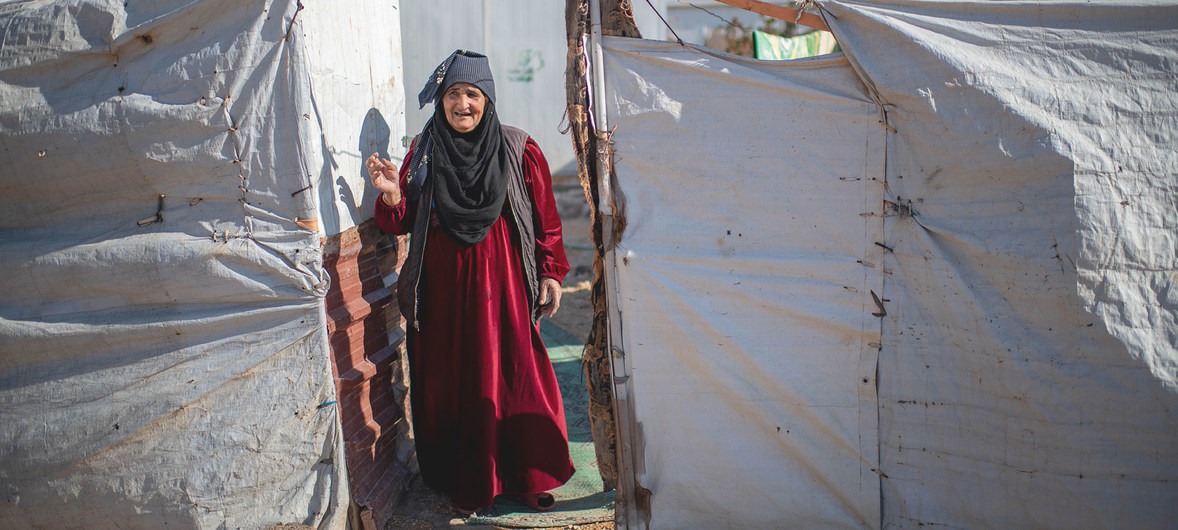
One percent of the world’s population has been forced to flee their homes due to war, conflict and persecution to seek safety either somewhere within their country or in another country, according to the latest Global Trends report released June 18 by UNHCR, the UN Refugee Agency. As more people became displaced than at any time since UNHCR began issuing its annual study, fewer were able to return home—or even build sustainable lives in another country. “We are witnessing a changed reality in that forced displacement nowadays is not only vastly more widespread but is simply no longer a short-term and temporary phenomenon,” said UN High Commissioner for Refugees Filippo Grandi.
At the end of 2019, there were 79.5 million people around the world who had been forcibly displaced, according to the yearly report, up from 70.8 million the year before. The rise was in part due to worrying new displacements in places such as the Democratic Republic of the Congo, the Sahel region of Africa, Yemen and Syria. It also reflected the inclusion for the first time of 3.6 million Venezuelans who have been displaced outside their country but who have not sought asylum.
By the end of 2019, a total of 4.5 million people had fled Venezuela, the region’s biggest exodus in recent history and one of the largest displacement crises in the world. Most sought refuge in Latin America or the Caribbean.
As the conflict in Syria ground on, the country continued to account for the largest number of refugees, asylum-seekers and internally displaced people—13.2 million in total, roughly one sixth of the world’s forcibly displaced people. Syrian refugees who fled to neighboring countries struggled with the trauma of protracted displacement.
There were 29.6 million refugees or others displaced outside their country at the end of 2019, and 45.7 million people who had sought refuge within their own country. Nearly 4.2 million additional people were awaiting the outcome of asylum cases.
More than two-thirds of the world’s refugees or others displaced outside their country came from only five countries: Syria, Venezuela, Afghanistan, South Sudan and Myanmar. And the world’s poorest countries continued to host the majority of refugees.
Finding long-term solutions for refugees—whether it meant helping them return home safely and voluntarily, integrate into local culture in a host country, or resettle in a third country—proved increasingly difficult. Over the last decade, only four million refugees were able to return to their native countries, compared with 10 million the previous decade. Roughly 0.5% of the world’s refugees were offered resettlement in 2019.
The problem of displacement shows no sign of abating, as climate change, hunger and conflict contribute to increasingly complex crises. As the world grapples with the economic and social devastation of the COVID-19 pandemic and rising xenophobia, and countries continue to restrict entry, the problem of finding long-lasting solutions for refugees is becoming acute.
“We need a fundamentally new and more accepting attitude towards all who flee, coupled with a much more determined drive to unlock conflicts that go on for years and that are at the root of such immense suffering,” Grandi said. “People cannot be expected to live in a state of upheaval for years on end, without a chance of going home, nor a hope of building a future where they are.”
From UNHCR, June 18
Note: The UNHCR figure for total global refugees has broken previous records for several years running. Of the nearly 80 million people cited in the new report, 26 million are refugees; 20.4 million come under UNHCR’s mandate and 5.6 million are Palestinian refugees registered with the United Nations Relief and Works Agency for Palestine Refugees in the Near East (UNRWA). Syria remains the world’s greatest displacement crisis. (UN News)




